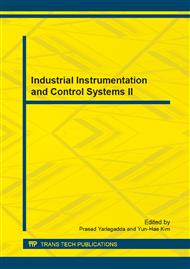p.1708
p.1713
p.1718
p.1722
p.1726
p.1733
p.1738
p.1744
p.1748
The Research on the Ka-Band Characteristics of the Satellite-Ground Link
Abstract:
As the low-band is more and more crowded, moving to Ka-band for the satellite-ground measurement and communication is preferred in the literature. This paper aims to contribute to the understanding of the influence of the atmosphere on the range error and the attenuation in Ka-band. By adopting the method recommended by ITU-R, we analyze the delay range error and the attenuation induced by the ionosphere and troposphere for Ka-band. The result shows that the ionosphere delay range error is significantly reduced in Ka-band comparing with navigation band. The maximal ionosphere delay range error is about 1m in Ka-band. The troposphere delay range error in Ka-band is the same as that in navigation band. When the elevation angle is over 40º, the troposphere delay range error become flat and doesnt exceed approximately 4 m. With respect to atmospheric attenuation, two important findings are obtained: firstly, when the elevation angle is over 40º, the atmospheric attenuation doesnt change significantly and is generally below 2 dB. Secondly, the atmospheric attenuation reaches its peak at the frequency of approximately 22.5GHz in Ka-band. Finally, an important conclusion can be drawn that in the design of the Ka-band satellite-ground measurement system, it should be considered to make the system work at the elevation angle over 40º. Thus, in generally, the range error doesnt exceed 5 m and the attenuation doesnt exceed 2 dB, even though it doesnt make the model correction.
Info:
Periodical:
Pages:
1726-1732
Citation:
Online since:
July 2013
Authors:
Price:
Сopyright:
© 2013 Trans Tech Publications Ltd. All Rights Reserved
Share:
Citation:


